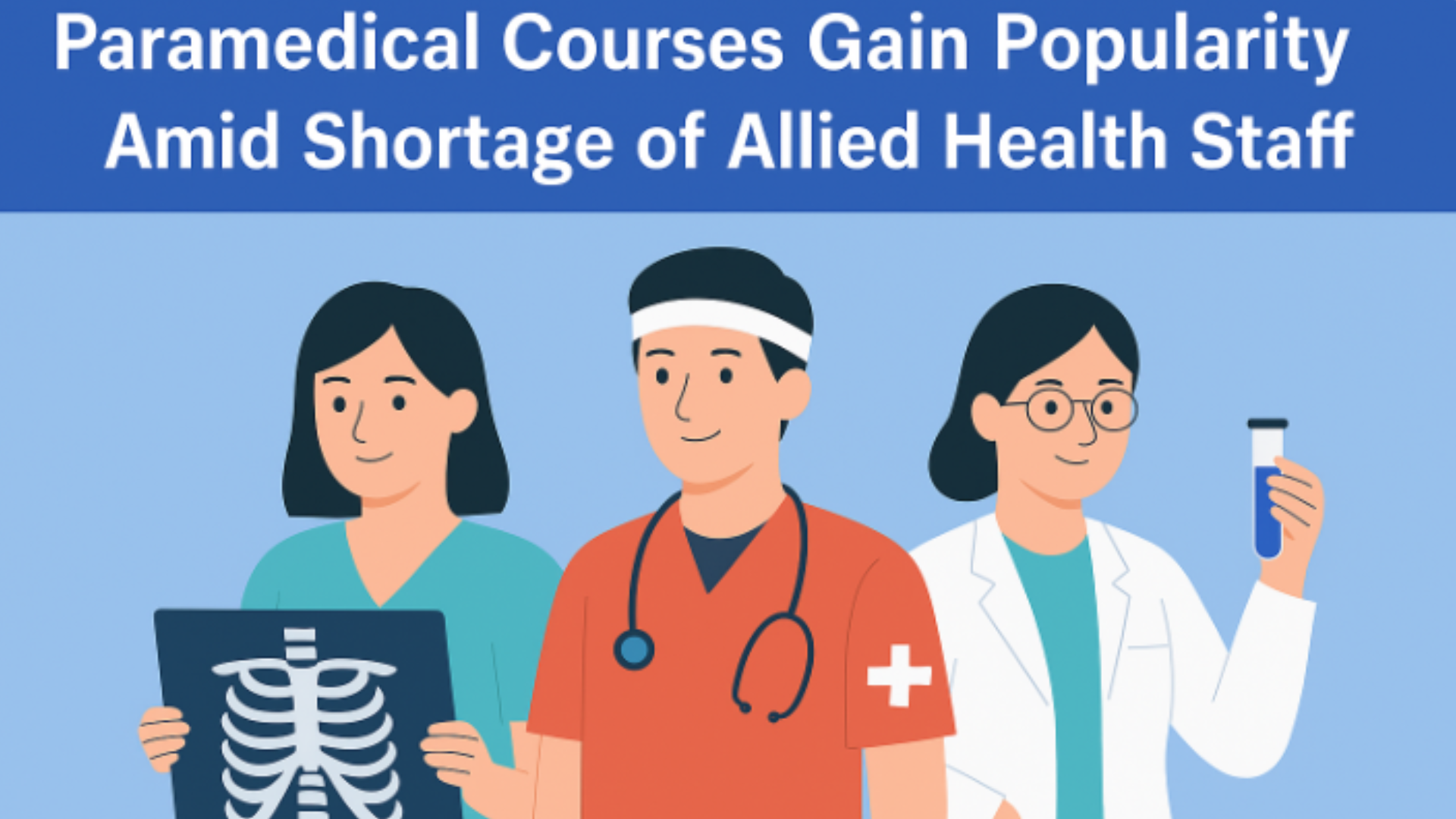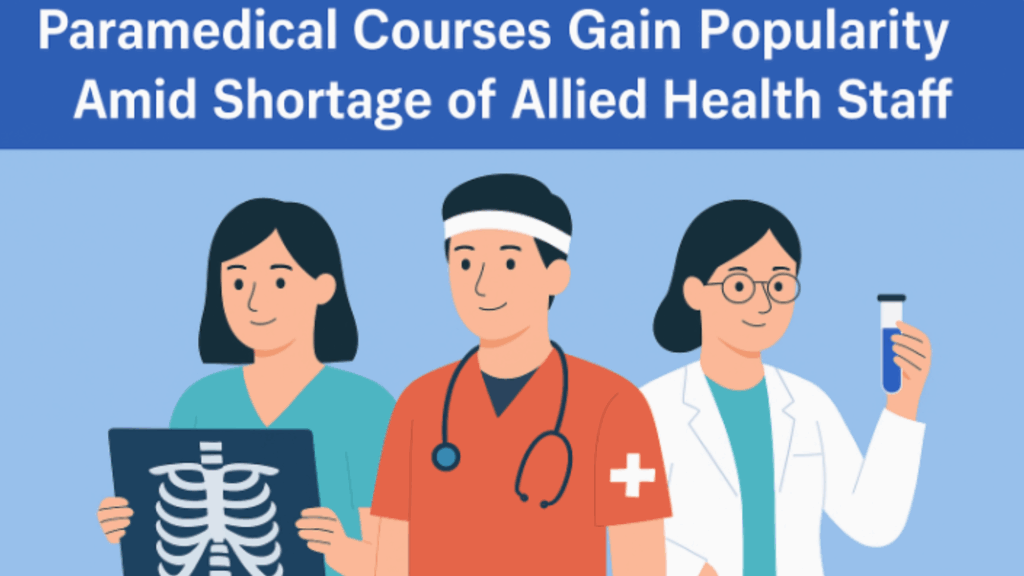Recently, the Paramedical Courses Gain Popularity Amid Shortage of Allied Health Staff; in this article, we have covered their benefits and applications in detail.
Paramedical Courses Gain Popularity Amid Shortage of Allied Health Staff
With India’s healthcare system expanding rapidly, paramedical courses are witnessing an unprecedented surge in demand. This growth is largely driven by an acute shortage of allied health professionals such as lab technicians, radiographers, physiotherapists, OT assistants, and emergency medical technicians—roles that are essential to hospital functioning but often overlooked.
As per recent data from the Ministry of Health and Family Welfare, the doctor-to-paramedic ratio in many Indian states is far below the global standard, creating a pressing need to train more support staff. This gap has turned paramedical education into a high-demand career path, particularly in semi-urban and rural areas.
Types of Popular Paramedical Courses

Paramedical education in India offers a wide range of options across diploma, certificate, and degree levels. Below are some of the most in-demand courses in 2025:
| Course Name | Duration | Career Opportunities |
|---|---|---|
| Diploma in Medical Laboratory Technology | 2 years | Lab Technician, Pathology Assistant |
| B.Sc. in Radiology & Imaging Technology | 3 years | Radiographer, MRI/CT Scan Technician |
| Diploma in Operation Theatre Technology | 2 years | OT Assistant, Surgical Technologist |
| B.Sc. in Physiotherapy | 4.5 years | Clinical Physiotherapist, Rehab Centers |
| Emergency Medical Technician (EMT) Course | 1–2 years | Ambulance and Trauma Care Specialist |
Government hospitals, autonomous health institutes, and private medical colleges with NABH-accredited training labs now offer many of these programs.
Factors Behind the Popularity Surge
Several trends are driving students toward paramedical streams:
- Faster entry into the healthcare workforce (1–3 years compared to 5+ years for MBBS)
- Affordable course fees, with scholarship support in many states
- High placement rates in hospitals, diagnostic labs, and healthcare startups
- Growing demand in telehealth, home care, and medical tourism
- Migration opportunities to Gulf, Canada, and Europe, where allied staff are in demand
In addition, the recent expansion of Ayushman Bharat health centers has increased the hiring of trained paramedical staff for frontline services.
Government Support and Institutional Expansion
To address the staffing shortage, the Ministry of Health is implementing the Skilled Health Workforce Mission, which includes
- Upgrading 150 district hospitals with paramedical training facilities
- Funding new Allied Health Science Colleges under centrally sponsored schemes
- Offering online modules and bridge courses via platforms like Swayam and eSanjeevani
- Partnering with private hospitals for apprenticeship-based learning
States like Kerala, Tamil Nadu, and Maharashtra are leading in paramedical education infrastructure, while aspirational districts in Uttar Pradesh, Bihar, and Madhya Pradesh are receiving targeted investment.
Career Scope and Industry Outlook
According to the Healthcare Sector Skill Council (HSSC), India needs over 20 lakh additional paramedical professionals by 2030 to meet public health goals. Graduates can find employment in:
- Multispecialty hospitals and diagnostic chains
- Blood banks and dialysis centers
- Home healthcare and rehabilitation clinics
- NGOs and disaster response teams
- Medical device companies and pharma firms
Freelancing and contract-based tele-consulting roles are also rising, especially for physiotherapists and nutritionists.
A Viable Alternative to Traditional Medical Education
For students who are unable to secure MBBS seats or prefer shorter professional pathways, paramedical education is emerging as a lucrative and impactful alternative. It offers both job security and social relevance, with less academic pressure and faster returns on investment.
In conclusion, the surge in popularity of paramedical courses reflects a welcome shift toward a more balanced and inclusive healthcare workforce—one that values not just doctors but every professional who plays a role in healing and saving lives.
Thanks for engaging with our content—we hope it made a difference.





